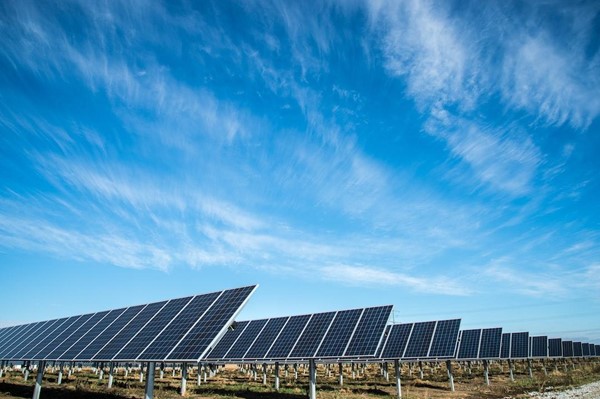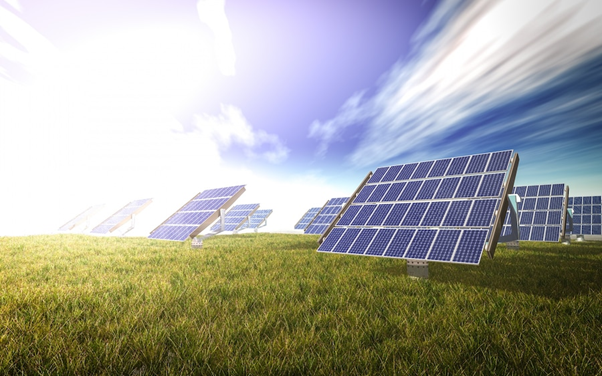A Look into Photovoltaics: How They Have Changed over the Years

Solar power is a bit of an odd thing — you face a panel toward Earth’s biggest lamp and suddenly you can power devices. Solar’s popularity has increased significantly over the years, and not just because of price. We’re seeing a lot of integrations of solar power beyond your typical solar calculator — solar lights for public streets, residential panels, solar fence lights, even solar cars!
But there’s a lot of reasons why one of the biggest sources of alternative energy is slowly becoming less of an alternative and more of a main source — here’s a look why.
Not Your Grandpa’s Solar Cell
Silicon-based technology has been around for decades — you’re reading this on a device that uses it. It’s natural that other silicon-based tech would see advancements in design and efficiency.
We’ve seen silicon solar panels develop into several different forms, some more popular than others.
- Thin film is wildly popular for residential use since the cells are flexible and easier to move.
- Polycrystalline cells are popular among hobbyists since they’re cheaper than more efficient panels.
- Monocrystalline cells are best used for stationary arrays and lighting.
Other silicon-based cells are available but either use highly toxic materials (cadmium) or are still in infancy in comparison to tried-and-true tech (perovskite cells). Regardless, solar cells are much more popular now because you can find the right kind of cell to fit whatever it is you’re trying to power.
Photovoltaic Prices
In the 1970s, if you decided to invest in solar energy, you probably wouldn’t have saved enough money through energy to justify the cost. A panel averaged about $75 per watt and efficiency rates were significantly low, approximately 5 percent.
Fast forward 50 years and suddenly, we see wildly different numbers — 75 cents per watt and about 20 percent efficiency. Time has been kind to solar technology.
But why has this technology made a complete 180 in price and efficiency? There’s no one factor to pinpoint with solar, but thankfully there are multiple telltale trends that point to why photovoltaics are starting to look a lot shinier than coal.
Recent research shows the reduction in cost can be attributed to two overarching reasons: direct technology advancements and indirect advancements. Direct technology advancements are pretty simplistic — some approaches of manufacturing solar cells use less silicon than older methods.
Using less silicon means cheaper solar cells. Other cost reduction factors tend to be more “nebulous,” such as research and development for newer photovoltaic technology. That leads to higher efficiency ratings, suggesting less-efficient panels drop in price. That’s a very basic overview of how solar cells have dropped in price, but these factors are probably the largest contributors.
Fossil Fuels — Enough Said
A quick glance at the nearest gas station is enough to make anyone wince at the rising costs of fossil fuels. However, the winds of change are altering the course of our future. There are already mandates in place that require new homes to have solar installations in sunshine-heavy states, and many municipalities have altered a lot of public utility to use solar power.
It’s a two-fold win for cities since a lot of solar utilities don’t need an underground power connection and they save on energy bills as well. Photovoltaics are becoming increasingly popular because we’re recognising a slow but progressive growth towards alternative energy, not only on an environmental level, but financial too.
Tax benefits, zero energy bills, and oftentimes lump sums of money saved are enough for public utility to rescind fossil fuel power. Unsubsidised renewable energy has already demonstrated to be the cheapest source of drawing power.
These are just a few ways photovoltaics have changed over the decades. It will take a lot more legislation, policy, production, and tech development to see this alternative form of energy become a main form of energy. The benefits — both on an environmental and financial level — are there for the taking. It’ll just take more time and effort to turn all of our lights on from the biggest source of energy we have — the sun.
About the Author
Greenshine New Energy specialises in developing and manufacturing customised solar outdoor LED lighting systems for a wide range of lighting applications. They provide cost-effective, industry-leading, and proprietary solar lighting solutions for commercial, residential, and industrial projects. Their solar LED light systems are installed at over 5,000 locations all around the world.



















